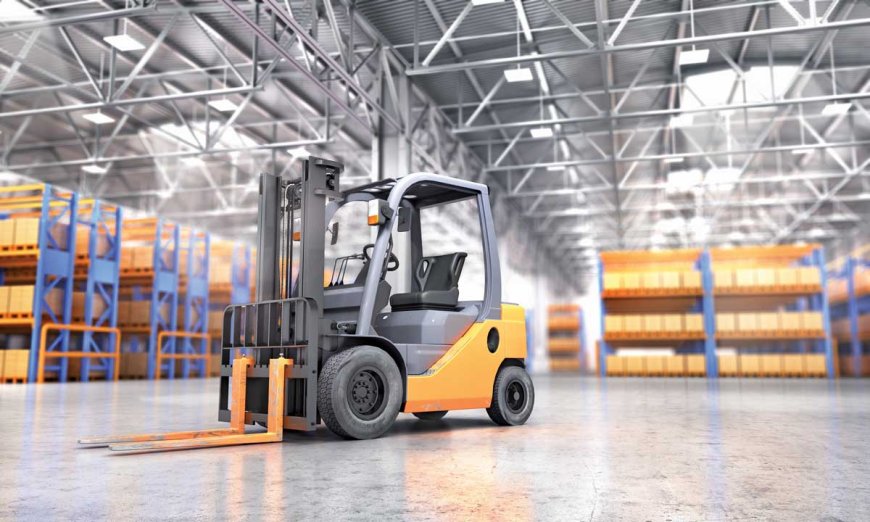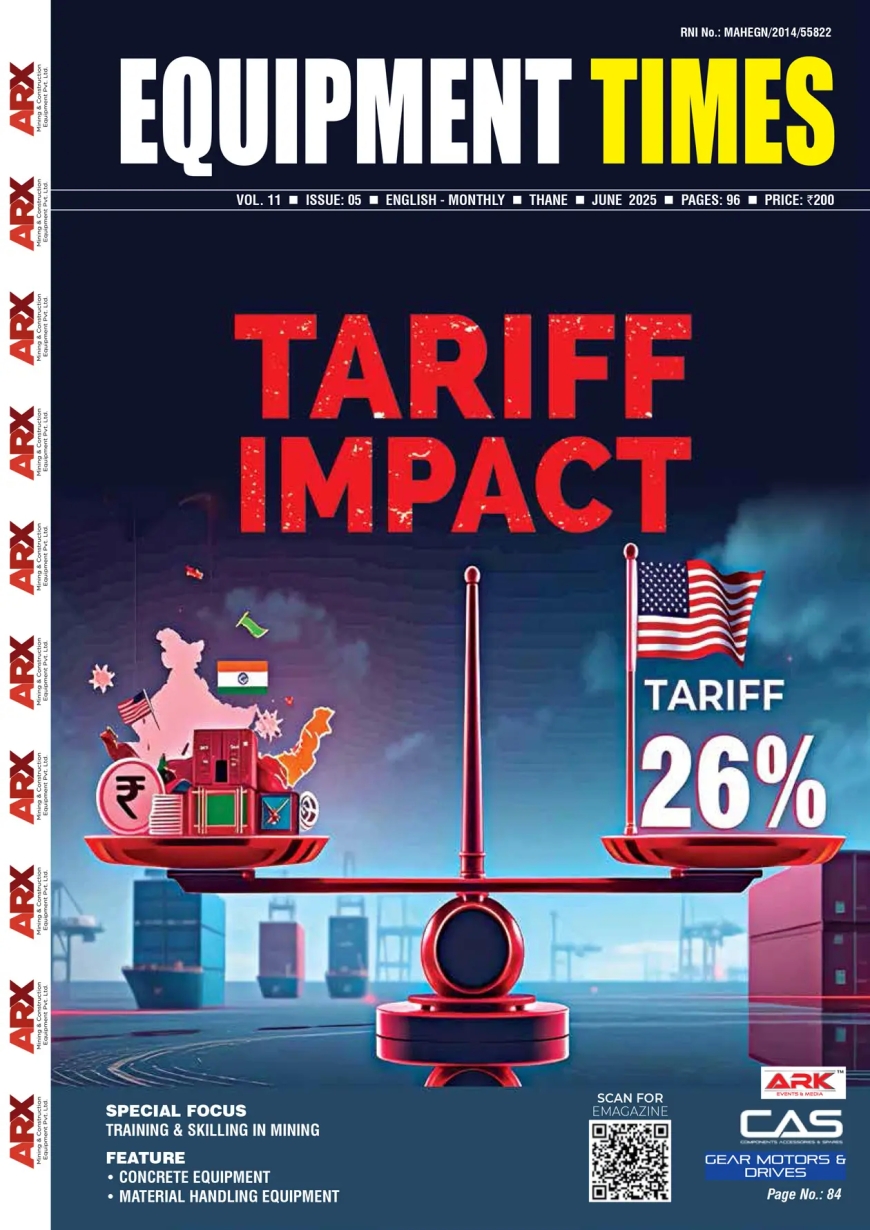WAREHOUSING EQUIPMENT: STORING IT THE RIGHT WAY..!
With IoT and automation, there has the emergence of some other advanced technologies like artificial intelligence (AI), machine learning (ML) and robotics that have also facilitated the industry of material handling equipment. The material handling equipment market has been largely

With IoT and automation, there has the emergence of some other advanced technologies like artificial intelligence (AI), machine learning (ML) and robotics that have also facilitated the industry of material handling equipment.
The material handling equipment market has been largely positive with bolster in manufacturing capacities and introduction of new products or innovations in the market. Equipment includes diverse range of tools, appliances, and storage which is leading to an increase in the market size to $145.21 million in 2018 and the market value will grow with compound annual growth rate (CAGR) of 7.50% during the forecast period of 2019-2025.
As per research report from Industry ARC, APAC is positioned as the leading region in the material handling equipment market. Rise in urbanization including the construction of airports, metro lines, and another transportation mode is influxing the demand in the material handling equipment market with the regional share of 38.19% in 2018.
Material handling equipment is an automated equipment used for storage, controlling, and managing of materials and goods. Material handling equipment is used in the industry which includes operations such as manufacturing, packaging, shipping, and distributing, and they are categorized as positioning equipment, transport equipment, unit load formation equipment, and storage equipment. The goods and materials are required to be arranged in order for which sortation conveyor system is one of best equipment used in the sector.
Shipping is the major application in the material handling equipment market. The growing e-commerce attributed with the features such as online shopping with fastest on door product delivery are gaining traction from wide population. The products in warehouse and storage space need to be packaged properly and arranged section wise to initiate the fastest shipping and distribution that is increasing the demand of equipment which will led to progression with CAGR of 8.10% through to end period.
Growth Drivers…
- Enhancement in the automation and productivity will help to drive the material handling equipment market.
- Rising Labor cost and safety concerns, various industries are choosing the equipment to improve work efficiency and time reduction are some factors driving the material handling equipment market.
- The growing need for efficient material flow are demanding automated operations that is responsible for growing research and innovation in the material handling equipment market.
- The growing demand for forklifts vehicles and other manageable tools from construction, e-commerce and retail are helping to continue the substantial progress in the material handling equipment market.
Trends…
All business processes are getting advanced with the face of automation and the material handling equipment industry in no exception. Automated systems for material handling are getting implemented in many manufacturing units and well as supply chain processes.
Automated heavy machinery is helping organizations with increased productivity followed by perfect supply chain systems. IoT is perhaps the source technology that has made it possible. Automation seems to simplify business but the backend comprises of very complex operations. Material Handling equipment themselves being complex need a lot of knowledge and expertise to be worked on.
Earlier, material handling equipments needed to be used by people working in the unit. Forklifts and cranes still remain the biggest examples of material handling equipment used by the business ecosystem using manpower. With IoT and automation, there has the emergence of some other advanced technologies like artificial intelligence (AI), machine learning (ML) and robotics that have also facilitated the industry of material handling equipment. Nowadays, we see a lot of warehousing spaces making using of modern material handling equipment. Business processes have become simple and seamless that productivity has increased manifold.
Challenges
The loading vehicle such as forklift used in material handling industry offers various uses but due to manual controlling every year around thousands of fatal accidents are registered that includes crushed by vehicle tipping over, run over by forklift and others. Fatal accidents causes labor/ employer with some serious injuries. Safety is one of the major challenge in the material handling equipment market. It becomes very important to find solutions to overcome the challenges. The sensor based forklifts are one of the innovation that can help. Moreover, implementing forklift safety programs and providing training can prevent or reduce the cases of fatal accidents indoor and outdoor.
Industry leaders…
 According to Rajiv Chaturvedi, Vice President- Sales and Marketing, After Service and Parts at Hyundai CE, said, “Impact of pandemic was quite significant in this segment, as low demand from all segments resulted in overall shrinking of the market in 2020 (MHE market size a little less than 11000 units). Compared to CY 2019, it declined (around 18%- 20%) – thankfully, market seems to have come out from that stage now and showing a decent demand growth in first quarter of CY2020. Many new opportunities have come up especially in E-commerce / Rental segment. Cost absorption by customers is a big challenge mainly due to low capex budget across the industries. Abnormal increase in sea freight (400%-500%) has put a lot of pressure on imported players and cost of equipment has increased substantially. Even on supply side there are limitations and almost all MHE players are facing this challenge which is affecting delivery schedules to customers.”
According to Rajiv Chaturvedi, Vice President- Sales and Marketing, After Service and Parts at Hyundai CE, said, “Impact of pandemic was quite significant in this segment, as low demand from all segments resulted in overall shrinking of the market in 2020 (MHE market size a little less than 11000 units). Compared to CY 2019, it declined (around 18%- 20%) – thankfully, market seems to have come out from that stage now and showing a decent demand growth in first quarter of CY2020. Many new opportunities have come up especially in E-commerce / Rental segment. Cost absorption by customers is a big challenge mainly due to low capex budget across the industries. Abnormal increase in sea freight (400%-500%) has put a lot of pressure on imported players and cost of equipment has increased substantially. Even on supply side there are limitations and almost all MHE players are facing this challenge which is affecting delivery schedules to customers.”
He further added, “Due to higher focus on environment, optimization of cost of operation, popularity of electric forklifts is increasing and in many sectors, customers are replacing diesel fleet with electric ones. Electrical forklifts are very economical in running, are environmental friendly, due to which more and more customers are preferring this option.”
Anil Lingayat, Executive Vice President and Business Head at Godrej MHE, said, “Despite the sharp slowing of economic activity during the lockdown, India’s forklift industry revived late but reached the same level as the year before the lockdown. Much of this growth came due to buying by MSME companies who faced labour challenges due to possible labour migrations during the initial lockdowns and fear of the pandemic. They had to mechanize handling operations to drive throughput in their operations.”
He further added, “Our primary aim is to create a presence within a few hours reach of all industrial clusters where we have a population of Godrej forklifts. Over the years we have created a channel network of close to 100 locations across India. This network receives continuous training inputs, updates and skill development inputs to help serve customers better. Investment in modern software helps us manage customer requests, service schedules and maintain a high level of service delivery. Godrej also offers the widest range of maintenance plans to customers starting with basic support and going all the way to providing operators for the fork trucks besides servicing and maintenance.”
Logistics is a burgeoning sector in India, catering the large demographics across niche markets. The need for robust supply-chain management and unhampered distribution has emerged as a clear winner post this pandemic catastrophe. “Catering to the rising demand of varied customer segments, industries and markets, the logistics sector needs to scale up its operation to be the next sunshine sector of the economy,” Hemant Prabhu, COO, Greenbase Industrial and Logistics Park said.
Elaborating further on it, he said, “As Covid pandemic has disrupted supply chain distribution in warehousing and logistics space, the new trends have been in shape. We foresee new opportunities in ‘In-City warehouse’ that will streamline seamless last mile distribution, reduce transportation cost, and improve delivery turnaround time. The dearth to create multi-level warehouses within city limits needs retrofitting of stressed assets by releasing pent-up assets that helps in capital unlocking. Covid induced economic lockdown and curbs stimulated the demand for e-commerce players to come to rescue for catering the uptick in consumer demand across Metro’s, Tier 2 and 3 cities. The digital disruptive wave led to the transformation in the consumer behavior and buying methodologies anticipating quick delivery periods.”
Vikas Choudaha, SVP, Godrej Storage Solutions, said, “The logistics sector is focusing on the adoption of mechanisation which would eventually lead to automation albeit in a phased and selective manner. The supply chains supporting the essential services saw an immense spike in the first few months of the lockdown. However, they also faced severe challenges due to the lack of labour at hand. Therefore, the sector is looking to adopt new mechanisations to reduce their dependency on labour intensive processes. As digitisation is rapidly disrupting the industry, Artificial Intelligence and Robotics, in terms of material handling, information exchange, and telecommunications, has been playing a considerable role in contributing to the growth as well. Therefore, it is imperative to equip the new generation of workforce with digital manuals, digital training programs and communication platforms to provide cost effective customised solutions that customers are looking for. At Godrej Storage Solutions, we have designed modules for the industry around operations, safety and have specialised service offerings around audit and building capabilities.”
Choudaha further added, “In order to create a favourable digital ecosystem for empowering large-scale tech adoption, it is highly crucial to draw and sustain the right global VC funds by nurturing a private sector investment climate, rather than solely depending on government-managed funds. It is also vital for younger personnel entering the logistics and supply chain domain to cultivate the essential technological competencies and knowledge to handle global supply chain complexities. Therefore, a key focus area to invest should be in training workforces in the logistics arena with the right technological skillsets and know-how to tackle crucial infrastructural and operational challenges.
As India rapidly transitions to a digital economy, it is vital for younger personnel entering the logistics and supply chain domain to develop the requisite technological competencies and knowledge to handle global supply chain complexities.”
Hits: 46








